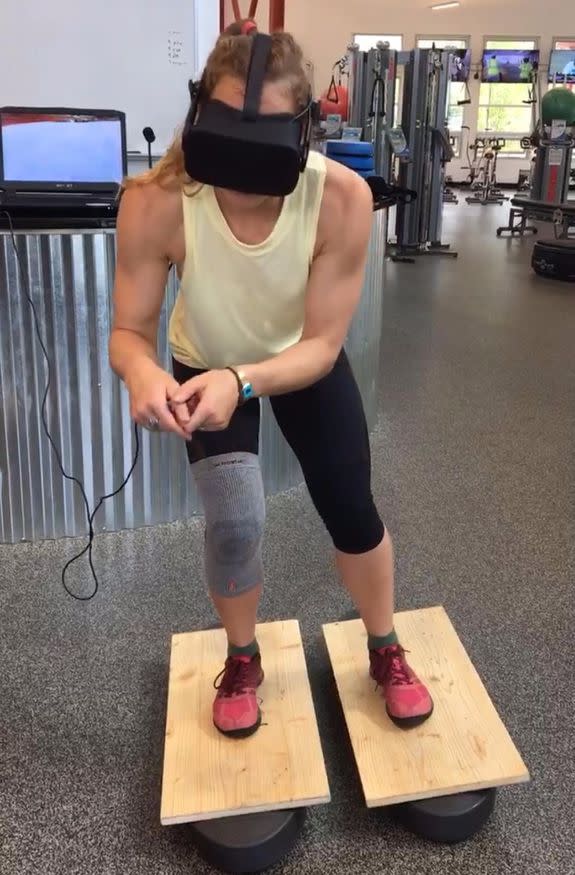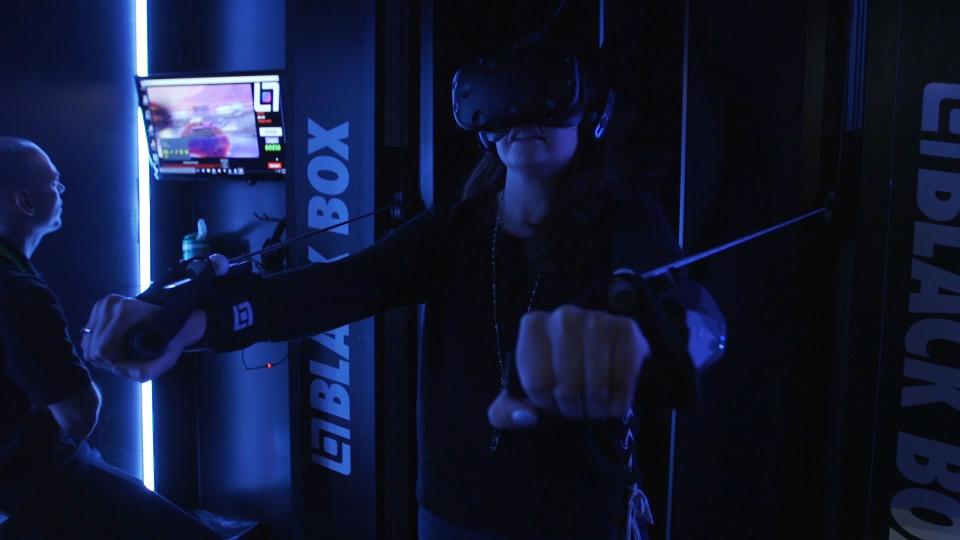Team USA is skiing in virtual reality to prepare for the Winter Olympics

The 2018 Winter Olympics are almost here. For the skiers and snowboarders of Team USA, that means constant training on the slopes — and in virtual reality.
For the past two years, U.S. Ski and Snowboard has been working with Strivr, a VR training startup based in Menlo Park, California. The Utah-based national governing body for skiing and snowboarding uses Strivr's VR platform to train athletes for World Cup competitions as well as the upcoming Olympics.
SEE ALSO: That really oily guy from the Olympics is going to compete in the Winter Games
Where VR is most useful for Olympians, according to Strivr CTO Brian Meek, is in course repetition. Skiers and snowboarders often only get one chance to experience the course they'll be racing on before a race itself, and they'll get that chance a few days before (or even the day of) the event.
U.S. athletes are able to take 360 videos of the course they'll be racing, and are able to ski that course over and over again, using Strivr's VR platform, when they get home.
Troy Taylor, U.S. Ski and Snowboard's high performance director, who is currently in Europe training with Team USA at the final World Cup events leading up to the Olympics, says VR use is common among his athletes. "Quite a few of our Alpine U.S. Ski Team are using VR, and using it at frequently at the events they compete in," he said in answer to emailed questions.
Taylor said VR training has positive results, though the specifics are confidential. "We don't want our competition to know all our secrets."
But Strivr's platform, which the NFL, NHL, and NBA also use, may provide the edge athletes and teams look for. Strivr claims some athletes have improved improve reaction time by 20% after training with its tech.
Meek estimated that athletes might repeat a race course in VR nine or ten times before a competition. He's even seen athletes wearing their VR headsets as they ride the chairlift up to the starting gate, to visualize the race to come.
Virtual reality also gives coaches and athletes a degree of control over their training that they wouldn't otherwise have. Strivr's platform allows coaches to edit their VR training videos, meaning they can prepare their athletes for unexpected obstacles. For example, Meek says coaches often insert rain or fog into their athletes' VR experiences for an extra challenge.
And the VR headsets that U.S. Ski and Snowboard uses (Oculus Rift at home, Samsung Gear VR on the road) are able to monitor athletes' head movements, so coaches can see what athletes are looking at and make sure they're focusing in the right places.

Image: U.S. Ski and snowboard
The second important use of VR is in rehabilitation. Skiers who are injured often can't train on the slopes, but Meek says they can use VR to stay in the racing mindset, and to keep their muscles sharp.
Taylor is confident that while VR training can never replace training on the slopes, it will remain an important training tool for Team USA.
"VR helps our athletes visualize the courses they will race on in a virtual environment, which is both helpful in terms of familiarizing themselves with the different race courses you find at each venue, and it’s a safer way to train than skiing... It is another tool we have in the locker to help our athletes, and every little bit counts."
WATCH: This VR gym makes you work out by playing games


 Yahoo Sport
Yahoo Sport 




































